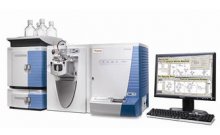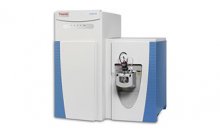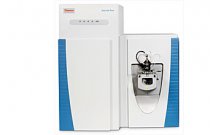利用组合的目标/非目标物分析法、可变的数据依赖采集(vDIA),分析小分子时获得高选择性和灵敏度
Variable Data-Independent Acquisition (vDIA) Delivers High Selectivity and Sensitivity in Combined Targeted and Untargeted Analyses for Small Molecules
Key Words
Q Exactive Focus, Orbitrap, veterinary drugs, small molecule HRAM quantitation, small molecule HRAM screening, UHPLC, vDIA
Goal
Forty-four multi-class veterinary drugs of known concentrations were employed to demonstrate how the use of a generic variable data-independent acquisition (vDIA) method with wide MS/MS precursor isolation windows achieves sensitivity and selectivity comparable to data-dependent MS2 acquisition (using narrow isolation windows) in quantitative and qualitative small molecule applications. In addition, a full record of MS and MS/MS data for the measured sample fit for non-targeted and unknown screening purposes is delivered.
Introduction
Untargeted screening approaches need data acquisition methods that gather as much MS and MS/MS information from a sample as possible, regardless of the nature of the sample or the primary analytic purpose. To date, combinations of full-scan measurements and wide-range fragmentation techniques like all-ion fragmentation (AIF) are commonly used methods in this approach. These scan modes fragment all ions in a single fragmentation event without precursor ion isolation and detect all fragment ions in a single mixed spectrum. As a result, they suffer from limitations in sensitivity, selectivity, and dynamic range compared to data-dependent acquisition methods where detected precursors are isolated with narrow isolation windows prior to fragmentation and detection.
In this technical note, a new high-resolution, accurate-mass (HRAM) scan mode, termed variable data-independent acquisition (vDIA), which is available on Thermo Scientific™ Orbitrap™-based instrumentation for screening and quantitation of known and unknown samples, is described and compared to standard data-dependent acquisition (DDA) methods. vDIA may utilize up to eight isolation windows ranging from 50 to 800 Da, covering the entire mass range of the full preceding scan. Typically, smaller windows are used for lower mass regions to increase dynamic range and therefore sensitivity; larger windows cover higher mass regions to improve the duty cycle. In a typical vDIA acquisition setup, five isolation windows are set, covering the entire mass range of the preceding full scan. Figure 1 diagrams a representative vDIA method setup. Figure 1B shows an alternative setup, covering a wider mass range. Up to eight isolation windows can be used to span the full-scan mass range. However, earlier studies indicate that five fragmentation windows represent an optimal compromise between sensitivity and selectivity on the one hand and scan speed on the other.1
Conclusion
The vDIA scan mode on the Q Exactive Focus MS serves as a generic acquisition method for diverse analytes, delivering a complete data record of the measured samples. It is perfectly suited to acquiring data for quantitative purposes while additionally offering uncompromised performance for non-targeted and unknown screening applications. Overcoming the limitations of full-range fragmentation techniques, vDIA provides selectivity and sensitivity comparable to data dependent MS2 measurements while generating a complete record of full scan and fragmentation data for each of the measured samples.




